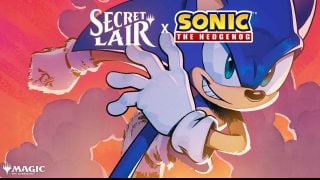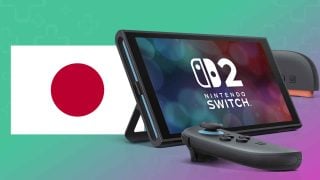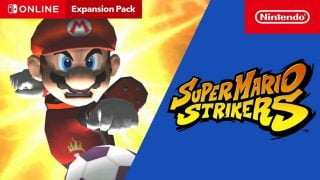Mortal Kombat 11 is like a perfect distillation of the modern AAA game industry. It’s a tug of war between game designers, artists, producers, and distributors. While the gameplay is the best it’s ever been, almost everything that happens when there isn’t a health bar on screen feels like it has a disdain for the player.
I’ll start off by saying that I’m truly impressed that NetherRealm Studios decided to release a Switch port with no compromises in content the same day as the other versions. Even though the Switch has put up some insane sales numbers, and companies do continue to port AAA games, I can’t think of the last one that released on launch day with the other SKUs. The Switch version does come with some concessions to its graphics, which I’ll get to, but kudos for including the Switch in this incredibly fun fighter.
Toasty!
Mortal Kombat 11 may be the eleventh mainline entry in the series, but it’s best to think of it as the third in a modern trilogy of games, starting with 2011’s Mortal Kombat (aka MK9), then continuing in 2015’s Mortal Kombat X. This modern trilogy revived the Mortal Kombat franchise, which went dormant due to a half dozen or so games that ranged from mediocre to very bad. The modern games have a focus on deep story modes, refining gameplay from game to game, and, in the case of MKX and MK11, customization of fighters.
MK11, in my opinion, has the finest combat system of any NetherRealm Studios (NRS) title ever. I personally loved MKX, but that game had an extreme focus on rushdown gameplay that sometimes made me feel helpless, as I tend to play fighters more focused on defense than offense. MK11, on the other hand, is a much slower game, and is all the better for it. There’s no more run function, replaced with short dashes. Jumps are slightly slower, and combos are, mercifully, far shorter than the ten second long combo videos I would get caught in playing MKX online. (I wasn’t very good!) MK11 is much more interested in “footsies” — a term used to describe when both players are standing and moving, trying to use spacing to react to the other player’s actions, rather than trying to be the first to get them in an offensive vortex.
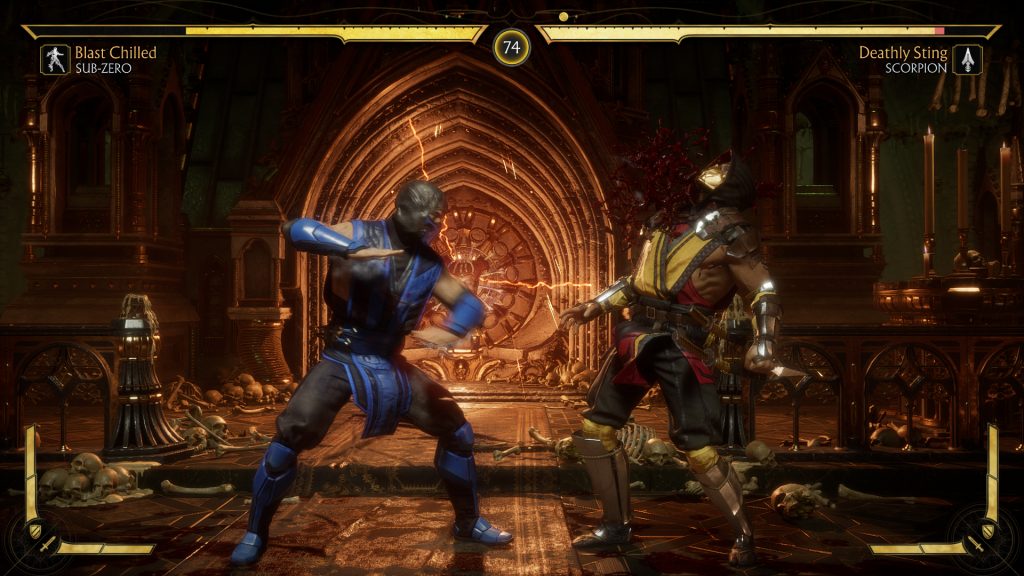
A few new gameplay systems help with the flow of the fights. One of the biggest changes is the removal of a traditional super meter. In MKX, you had one meter that filled as you attacked and took damage that you used for everything: EX moves, escaping juggles, modifying throws, and the super X-Ray attacks. In MK11, there’s an Offense Meter, a Defense Meter, and the new “Fatal Blow” attacks. The Fatal Blow replaces the X-Ray. Rather than waiting for a full super meter to use it, characters gain access to the move when their character has low health. They can only land the move once per match and must wait about nine seconds if they miss or it is blocked. This means that super moves are actually part of the game, since in MKX it was almost always better to use meter for enhanced moves and defensive escapes. The downside to that is that you might have to sit through the same long Fatal Blow animations every fight, somewhat ruining the pace.
The Offense and Defense meters are a great addition. They both start full and fill up automatically over time. The Offense meter lets you enhance your attacks, while the Defense meter lets you perform wake up attacks, fall out of juggles, and perform wake up rolls. The refilling meter allows players to be a bit more willing to use the meter when it is beneficial, rather than having to take a mental inventory of whether or not you’ll be able to escape the next juggle if you add a little more damage to the command grab you just landed.
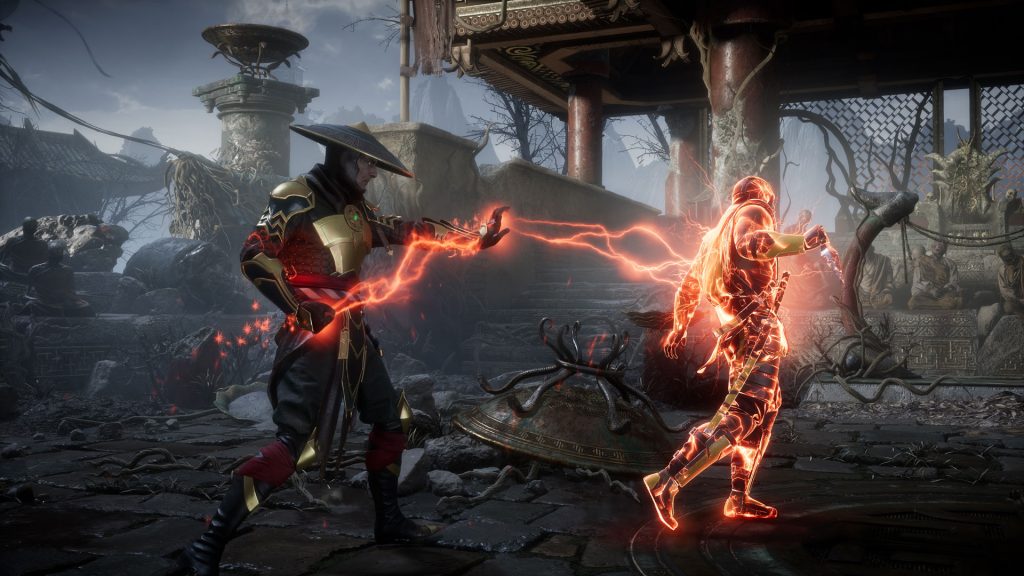
The other biggest addition to the gameplay is the Krushing Blow system. Each character has certain attacks that, under certain circumstances, causes the camera to zoom in on a more gnarly version of that attack, usually adding more damage and sometimes leading to more combo potential. For instance, using Kano’s back 3 attack and landing it as a counter will cause the camera to zoom in on his boot knife entering their gut, causing huge damage. The Krushing Blows are a very cool system that can add some extra depth to your gameplay style, but it’s a little unbalanced. Some characters have stupidly easy requirements to land their Krushing Blows (newcomer Geras can easily land his, each one taking away 25% or more of the target’s health), while others are much harder to land. Other newcomer Cetrion can cause a Krushing Blow with her Geyser special, but only after missing two and hitting the third. Some balance may be needed to either lighten the requirements for the characters who rarely land them, or to tighten them for those who can land one each match without fail.
Overall, the gameplay in MK11 is tight, tense, and fair. I never feel hopeless or completely out of my league like I did sometimes in MKX, but there’s definitely a skill gap that rewards practice and character knowledge. The fatalities are some of the best in the franchise, ranging from nasty to humorous, but they all feel unique and well-paced, like an Itchy and Scratchy cartoon. So if you like Mortal Kombat for the violence, you won’t be disappointed.
Blood Diamonds
Unfortunately, MK11 packages its delightful gameplay in a wrapping filled with microtransactions and grinding. The game has a customization feature that lives between MKX’s “variation” feature and Injustice 2’s focus on equippable gear. MK11 allows you to create custom variations, choosing from a list of special moves, as well as equipping upgradable cosmetic gear and skins. The issue, however, comes from unlocking and upgrading those things. Mortal Kombat 11 has numerous currencies, which can mostly be spent in the Krypt, an admittedly neat mode that lets you run around Shang Tsung’s happy murdertime castle island unlocking chests. These chests are completely randomized and often cost ridiculous amounts of currency, and you are in no way guaranteed any unlocks for your favorite characters. I’ve played for hours and have not unlocked a single piece of gear or cosmetics for Kano, and I have put almost all of my time into him.
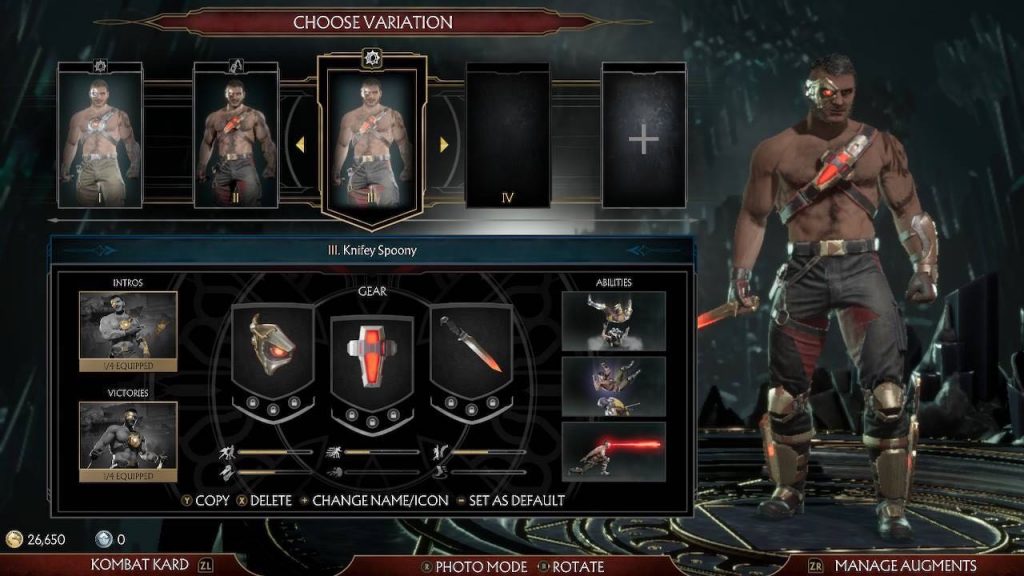
The Towers of Time, which allow you to play against super strong, and sometimes unfair, AI battles for more unlocks, can be used to unlock gear for specific characters, but each time you do it costs more gems or crystals. NRS has addressed the complaints about the game’s economy and Towers of Time difficulty, and they’ve promised a patch; but the promise to fix it only highlights the original issue: if they can just release a patch to make unlocks easier and the economy less grindy, then the decision at some point was consciously made to make it that grindy and difficult. It highlights an ongoing issue in AAA video games: the creation of artificial difficulty to push microtransactions for either loot boxes or consumables to make challenges easier, or even doable. Mortal Kombat 11 is an extremely fun game, but the customization features, while neat in concept, are so interwoven with predatory decisions that it’s palpably off-putting.
Outside of the Towers of Time and the Krypt, there’s also a full story mode. I won’t go into too much detail, but if you’ve played a NRS story mode in recent years, you know what to expect: people argue, walk into an arena, and fight someone. The story is a continuation from the previous two games, and plays off them in fun ways. I also appreciate NRS and their willingness to canonically kill off some of their classic characters, although death is more of an inconvenience than anything in the MK universe. If you liked previous story modes, there’s lots to like here. The game also has a fantastic tutorial that covers everything from moving to frame advantage and whiff punishing. If you’ve never played a Mortal Kombat game, this one will teach you everything you need to know.
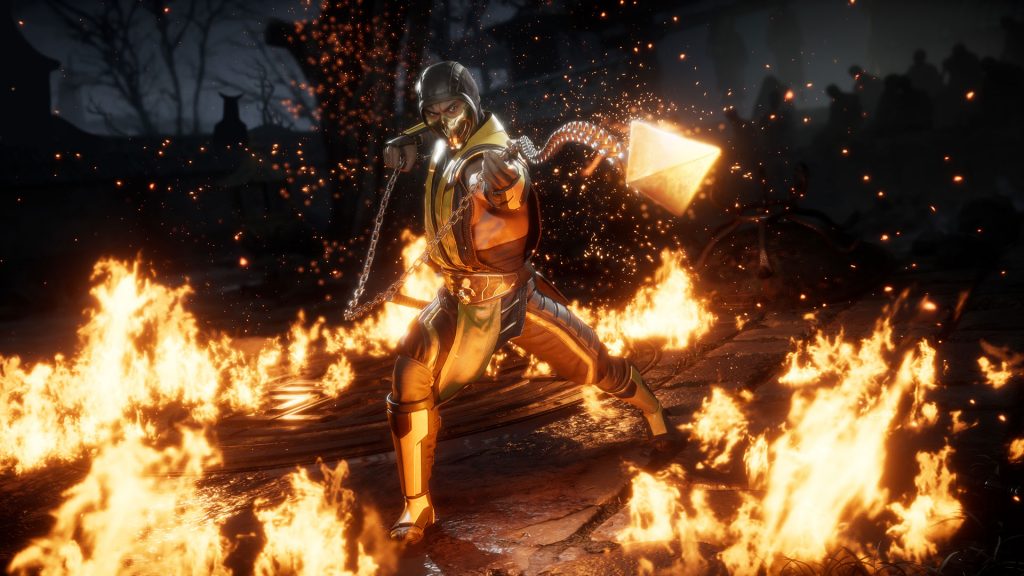
The online suite is pretty standard, with ranked and casual modes, but with some additional ones such as King of the Hill and online Practice modes. The netcode is surprisingly stable, but I have certainly had matches that moved like mud or became incredibly choppy. Still, the connection has been more hit than miss.
Switch It Up
The Nintendo Switch version of the game, to my knowledge, has every feature the other versions have, which I’m very happy about. In matches, it runs at a smooth frame rate. The graphics take a considerable hit in the transition, however. In handheld mode, everything looks a bit blurry to allow the game to run properly. It’s not game ruining, but very noticeable. It looks better in docked mode, but textures are still a bit muddy and the lighting can be quite poor. I’m not someone obsessed with graphics, and I would rather have a game that ran well on each system it is put on, but I can’t say I wasn’t a bit surprised by how weird some of the textures and models looked in some stages.
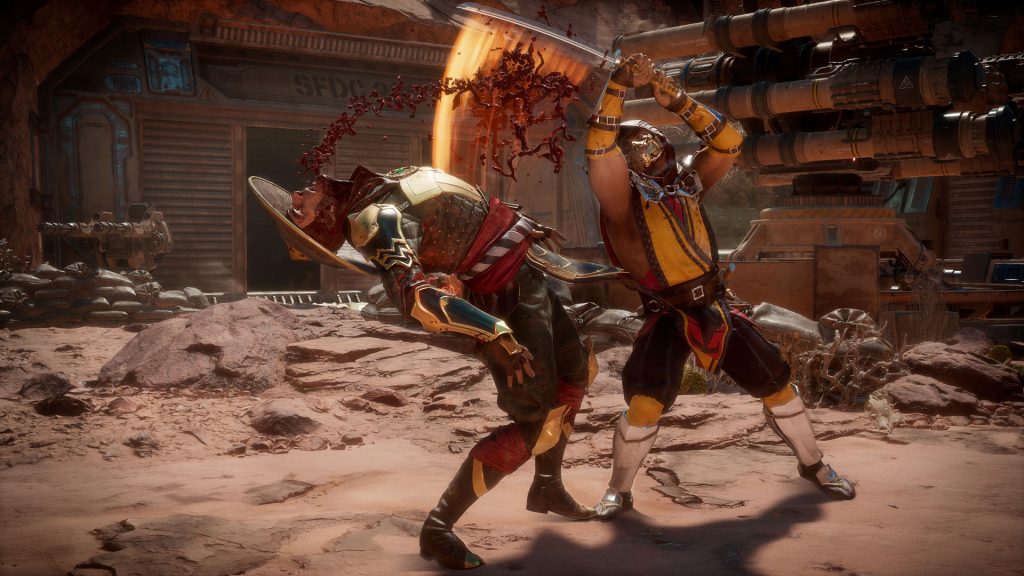
The upside of the Switch version is that you can play it anywhere. However… the aforementioned loot system means that, if you’re not connected to the internet, there is very little you can do. You can play the traditional arcade modes offline, but you won’t receive rewards for completing them. You can make custom variations offline, but they will disappear as soon as you connect to the internet. I was quite disappointed with the amount of content locked behind an online connection. It would be a great time killer on a bus or train to play some Tower fights and unlock some gear, but that isn’t even an option. Still, it’s nice to be able to play it online and in handheld mode in bed, but taking the game out of the house won’t do much unless you have friends to play with. It can be good for getting in some training mode time, though.
FINISH HIM
As I said at the beginning of the review, Mortal Kombat 11 is a great game that feels like the suits at the top asked the designers “okay, but how will this earn us more money?” The economy is so broken and grindy that, even with a supposed fix coming, it will be hard to forget.
The actual Switch version is still a great port in terms of gameplay, coming at the expense of the other versions’ beautiful textures and lighting. The ability to play it anywhere is severely hampered by the online connection requirements for so many features, which is an absolute shame. Still, it’s hard to be too harsh overall on the game, because MK11 has the best gameplay systems the company has ever released. It’s just a shame it’s wrapped up in a package that doesn’t value your time or your money in every respect.
Leave a Comment
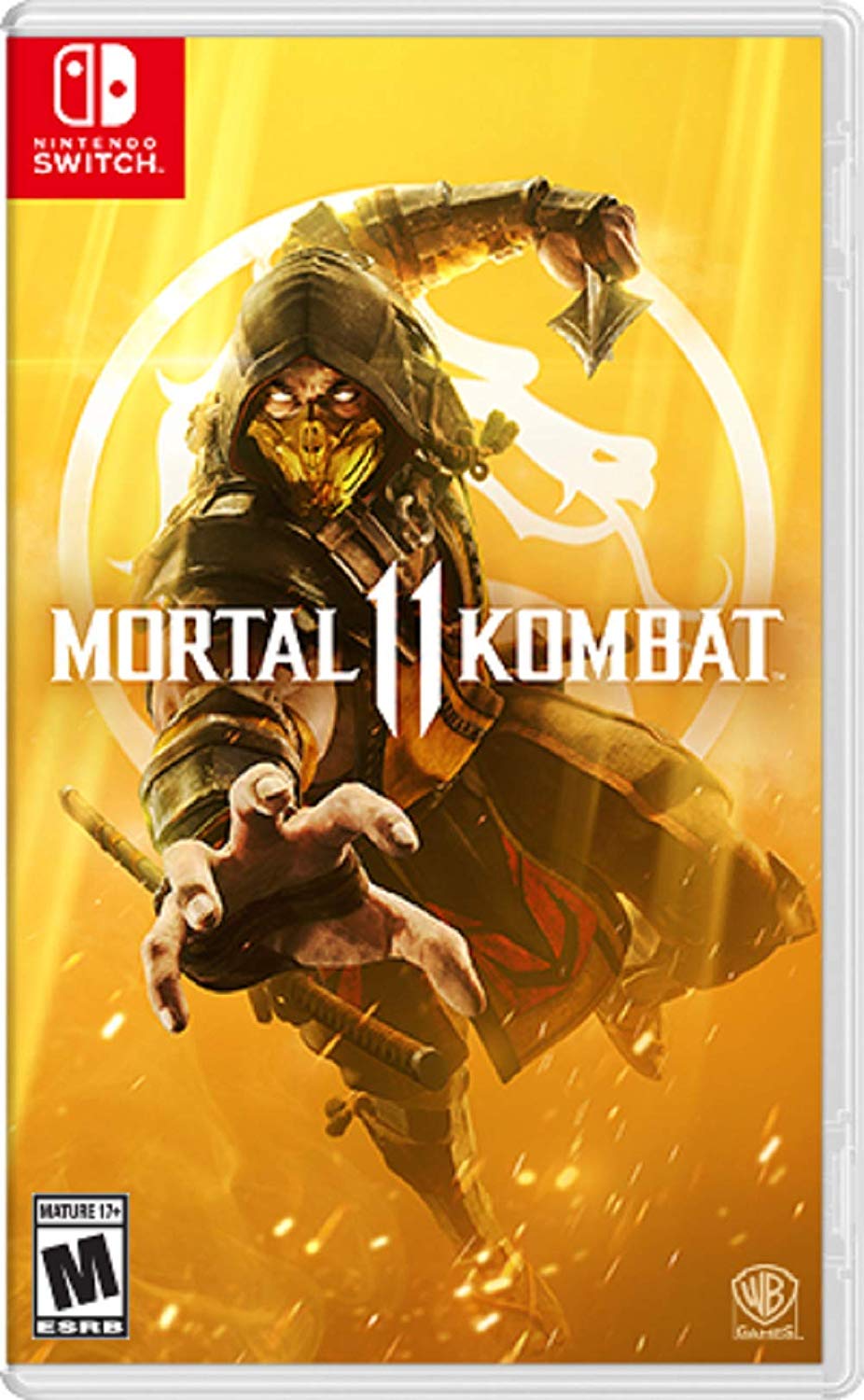
System: Nintendo Switch
Release Date: April 23, 2019
Categories: Puzzle, Platformer
Publisher: WB Games
Developer: Shiver Entertainement, NetherRealm Studios
